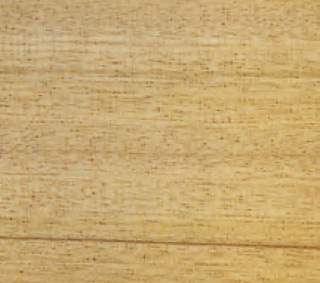DIBETOU
| Origin: | Africa |
| Other names: | Bibolo, African Walnut, Mpengwa, N’vero, Apopo, Boyo Kondi, Lifaki Muindu, Noyer d’afrique, Congowood, Bosso, Eyan, Dubini-Biri, M’bero, Anamenila, Sida, Bombulu, Wnaimei, Noyer Du Gabon, Tigerwood |
WOOD DESCRIPTION
| Color: | brown |
| Sapwood: | clearly demarcated |
| Texture: | fine |
| Grain: | interlocked |
| Interlocked grain: | slight |
| Note: | Ring shakes and brittleheart possible in some logs. Wood yellow brown or grey brown, with black streaks or veins taking a golden glint. Black deposits in the pores. |
NATURAL DURABILITY AND TREATABILITY
| Funghi (according to E.N. standards): | class 3-4 – moderately to poorly durable |
| Dry wood borers: | durable – sapwood demarcated (risk limited to sapwood) |
| Termites (according to E.N. standards): | class S – susceptible |
| Treatability (according to E.N. standards): | class 3-4 – poorly or not permeable |
| Use class ensured by natural durability: | class 2 – inside or under cover (dampness possible) |
| Species covering the use class 5: | No |
| Note: | This species is listed in the European standard NF EN 350-2. |
